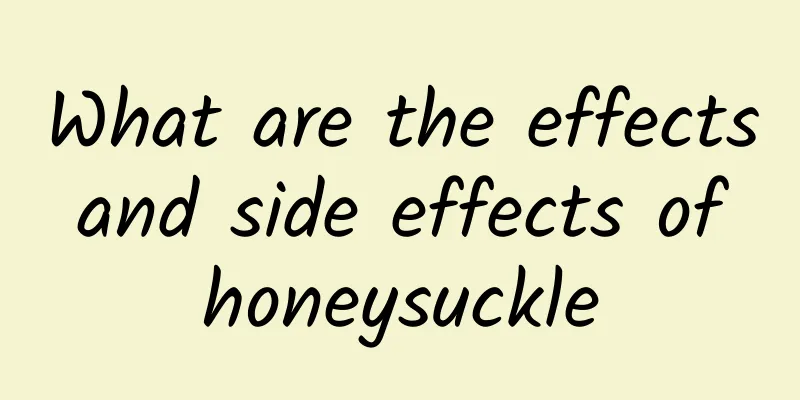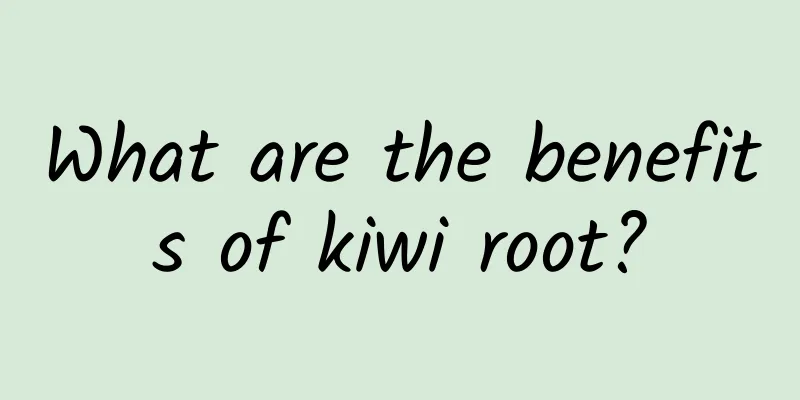The efficacy and function of peony bark

|
The treatment of diseases also requires good medicines, and the choice of medicines is also very critical, so that it can be of great help to improve the disease. Different medicines are also very different in selection, so many people don’t know what kind of medicine is the best choice, which also requires consultation. Mudan Cortex is a common medicine, which has a good effect on the treatment of diseases. What are the effects and functions of Mudan Cortex? There are many aspects to the efficacy and effects of peony bark, so when choosing it, you need to not do it casually. This will not help with the treatment of the disease. If you want to be able to treat the disease well, you need to have a grasp of all aspects of it. Effects and functions of peony bark: The efficacy of peony bark Clears away heat; promotes blood circulation and relieves blood stasis. It is used for febrile diseases with heat entering the blood; rash; vomiting and bleeding; hot eyes; fever in the late stage of pathogenic bacteria; hot flashes due to yin deficiency and bone steaming; blood stasis and amenorrhea; dysmenorrhea; carbuncle, swelling and sore; pain caused by falls and injuries; rheumatism and heat arthralgia The role of peony bark 1. Effects on cardiovascular system: Paeonia lactiflora can increase coronary blood flow, reduce cardiac output and lower left ventricular work in anesthetized dogs. It has a significant protective effect on experimental myocardial ischemia, which lasts for a long time and reduces myocardial oxygen consumption. 2. Effects on the central nervous system: Paeonol has an antipyretic effect on fever in mice caused by oral administration of typhoid and paratyphoid vaccines, and reduces the body temperature of normal mice. Oral administration of paeonol can inhibit the writhing reaction and tail tenderness reaction of mice caused by intraperitoneal injection of acetic acid, counteract the hyperactivity of mice caused by caffeine, significantly prolong the sleep time of mice induced by cyclohexylbarbital sodium, and at high doses can cause the righting reflex of mice to disappear. It can significantly counteract the convulsions caused by pentylenetetrazol, strychnine, nicotinic acid and electric shock. The sites of action are the midbrain reticular formation and thalamus. 3. Anti-inflammatory effect: Intragastric administration of paeonol can inhibit the plantar edema of rats caused by dextran, acetic acid or carrageenan, and can inhibit the enhanced capillary permeability of the mouse abdominal cavity or guinea pig skin caused by acetic acid or 5-hydroxytryptamine, and inhibit the occurrence of stress ulcers in mice. 4. Antibacterial effect: In vitro experiments show that the decoction of moutan bark has a strong antibacterial effect on Bacillus subtilis, Escherichia coli, Salmonella typhi, Salmonella paratyphi, Proteus, Pseudomonas aeruginosa, Staphylococcus, hemolytic Streptococcus, Pneumococcus, Vibrio cholerae, etc. The decoction of peony leaves has a significant antibacterial effect on Shigella dysenteriae, Pseudomonas aeruginosa and Staphylococcus aureus, and its active ingredient is gallic acid. 5. Anticoagulant effect: In vitro tests on human platelets showed that both the water extract of Paeonia lactiflora and Paeoniflorin can inhibit the production of thromboxane A2 by platelet arachidonic acid, thereby inhibiting platelet aggregation. This is due to the inhibition of the cyclooxygenase reaction from arachidonic acid to prostate H2. The methanol extract of Paeonia lactiflora has the effect of inhibiting experimental thrombosis caused by endotoxin. 6. Effect on the immune system: Oral administration of paeonol, paeonol, peony root, oxidized peony root and benzoyl peony root to mice can promote the clearance rate of intravenously injected carbon particles in the blood, even when the function of the mononuclear macrophage system is in a low state. Microscopic examination showed that the phagocytic capacity of Kupffer cells in the liver and macrophages in the spleen was enhanced. 7. Effect on lipid metabolism: Paeonia lactiflora and the paeonol and paeoniflorin it contains have an inhibitory effect on the lipolysis of adipocytes caused by adrenaline; Paeonia lactiflora water extract can increase the production of fat from glucose in adipocytes, and significantly increase the production of fat from glucose caused by insulin. Through the above introduction, we have a good understanding of the effects and functions of peony bark, so you can choose it with confidence. It should be noted that now peony bark is used to treat diseases and the method of use should be carried out according to the doctor's advice. This will be of great help in stabilizing the patient's disease. |
<<: The efficacy and function of rosemary
>>: Effects and functions of Momordica cochinchinensis
Recommend
Will you get more wet walking in the rain or running in the rain?
If it rains one day and you don’t have an umbrell...
If you are angry, just vent it out? It turns out that we have been doing it wrong all along.
It is inevitable to feel angry and furious in dai...
Top 10 scientific breakthroughs of 2021, AI is on the list
On November 17, 2021, Science magazine released t...
Small soap bubbles hide big secrets
Blowing bubbles is a small game we often played w...
Papaya seeds never thought that they would one day become a substitute for caviar
In movies and TV dramas, caviar is a high-end ing...
Where does dark matter come from? Is there anything more mysterious in the universe than dark matter?
Scientists speculate that in this vast universe, ...
Will you become ugly if you work too long? How to say goodbye to "being ugly due to fatigue"?
Today I accidentally found my school photos. The ...
It’s been two years since Tianwen landed on Mars. Let’s see whose hometown has landed on Mars?
May 15th marks the second anniversary of Tianwen-...
Shanghai official reminder! Doing this is very dangerous!
Recently, Shanghai's rumor-busting platform c...
The efficacy and function of crystal flower
Crystal flower is a traditional Chinese medicine....
The efficacy and function of Hackberry
Hookah is commonly used as a medicinal herb in tr...
Beyond 9,000 meters! Entering the deep earth! Why can "Deep Earth No. 1" break the record?
Shaya County in Aksu Prefecture, Xinjiang, is loc...
What are the medicinal values of aconite?
Traditional Chinese medicine is quite common in o...
The real-life version of “The Three-Body Problem”: Is the “Two-Dimensional Foil Cloud” really a “bug” in the world?
recently In the sky of Zibo, Shandong A "two...
The efficacy and function of closing the door at night
Traditional Chinese medicine often has unexpected...









